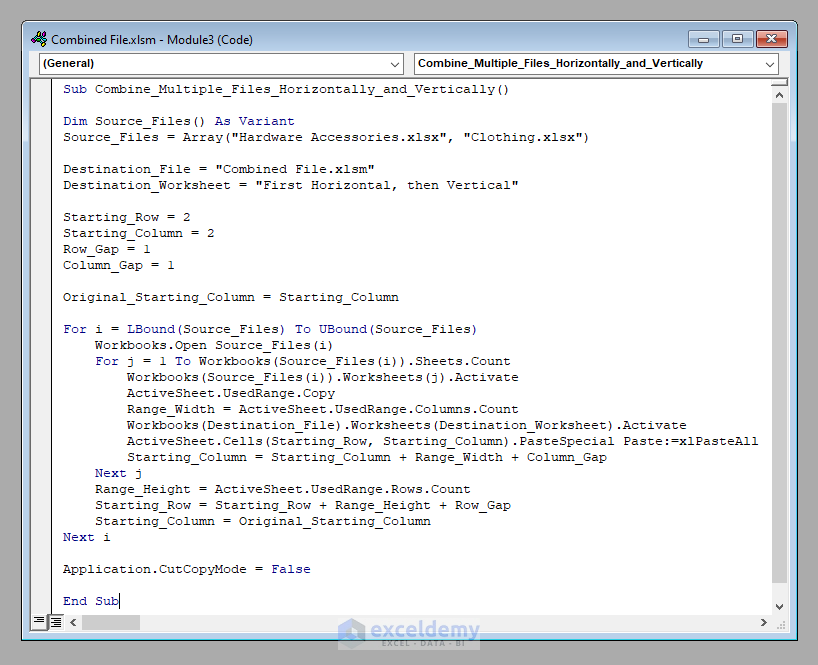Combine Excel Files into One New Sheet Easily

Why Combine Excel Files?

Combining Excel files into one new sheet can significantly streamline your data management process, particularly when dealing with multiple sources of data:
- Save time by not having to manually merge data from numerous sheets.
- Ensure data integrity with consistent formatting and avoiding human error.
- Enhance data analysis by having all relevant data in a single location.
- Improve collaboration by providing a unified view of data to all team members.
For instance, consider an accountant who needs to compile monthly sales figures from different stores into a single report. By merging Excel sheets, they can automate this process, reducing the time spent and the risk of miscalculations.
Step-by-Step Guide to Combining Excel Files

Here’s a straightforward tutorial on how to combine Excel files:
1. Organize Your Files

First, make sure all your Excel files are:
- Named consistently to avoid confusion.
- Stored in the same folder for easier access.
MyFolder
|_ Jan_Sales.xlsx
|_ Feb_Sales.xlsx
|_ Mar_Sales.xlsx
📁 Note: Keep your files in a separate folder for easier management.
2. Launch Excel and Create a New Workbook

Open Microsoft Excel:
- Click on the 'File' tab in the top-left corner.
- Choose 'New' to start a blank workbook.
3. Use VBA or Power Query to Combine the Files

There are several ways to combine Excel files, but using VBA (Visual Basic for Applications) or Power Query are often the most efficient:
Option 1: VBA Macro
Sub CombineExcelFiles()
Dim FolderPath As String
Dim FileName As String
Dim Sheet As Worksheet
Dim DestinationSheet As Worksheet
Application.ScreenUpdating = False
'Set the folder path where your files are located
FolderPath = "C:\MyFolder\"
'Set the destination sheet
Set DestinationSheet = ThisWorkbook.Sheets.Add
DestinationSheet.Name = "Combined Data"
'Loop through each file in the folder
FileName = Dir(FolderPath & "*.xlsx")
Do While FileName <> ""
Workbooks.Open FileName:=FolderPath & FileName
For Each Sheet In ActiveWorkbook.Worksheets
Sheet.Copy After:=DestinationSheet
DestinationSheet = ThisWorkbook.Sheets(Sheets.Count)
Next Sheet
Workbooks(FileName).Close False
FileName = Dir
Loop
Application.ScreenUpdating = True
MsgBox "Files combined successfully!"
End Sub
Copy this code into a new module in the VBA editor (Alt + F11):
💡 Note: Ensure you have macro security set to allow macros to run.
Option 2: Power Query
Power Query in Excel provides an easy-to-use GUI for data manipulation:
- Go to 'Data' tab, then 'Get Data' > 'From File' > 'From Folder'.
- Select your folder containing Excel files.
- Choose 'Transform Data' to open the Power Query Editor.
- In the editor, combine the data using the 'Combine' feature.
- Click 'Close & Load' to load the combined data into a new sheet.
Alternative Methods

If VBA or Power Query seems complex, here are simpler alternatives:
Using External Tools

External tools like Power BI or Google Sheets offer import features:
- In Power BI, you can import data from multiple Excel files and combine them into a single model.
- Google Sheets' "File > Import" feature allows importing from multiple Excel files simultaneously.
Online Services

Online services like Excel Online or Google Drive provide collaborative options for merging data:
- Upload your Excel files to the cloud and use their built-in functionality to combine sheets.
- These platforms allow real-time collaboration, making it easier for teams to work together.
Benefits of Combining Excel Files

Merging Excel files has numerous advantages:
- Efficiency: Reduce time spent on data consolidation.
- Accuracy: Minimize data entry errors and ensure consistency.
- Visibility: Gain a comprehensive view of your data.
- Automation: Set up processes to automatically merge data periodically.
To illustrate, imagine a marketing team that needs to analyze website visitor data from multiple sources. Combining these sources into one Excel sheet allows for quick analysis, trend spotting, and actionable insights.
To sum up, combining Excel files into one new sheet offers numerous benefits. It streamlines data management, saves time, ensures accuracy, and improves the overall visibility of your data. Whether you’re an accountant compiling financial reports, a marketer analyzing campaign performance, or a team leader managing project data, this skill can significantly enhance your workflow.
Can I combine Excel files with different structures?

+
Yes, Power Query allows you to handle files with different structures. You can transform and align data during the merge process.
Is there a way to automate this process?

+
Absolutely. By using VBA macros or setting up a Power Query refresh schedule, you can automate file merging.
How can I handle file permissions and security when merging data?

+
Ensure that you have proper permissions to access all files. Use secure cloud storage with access control to manage permissions effectively.



